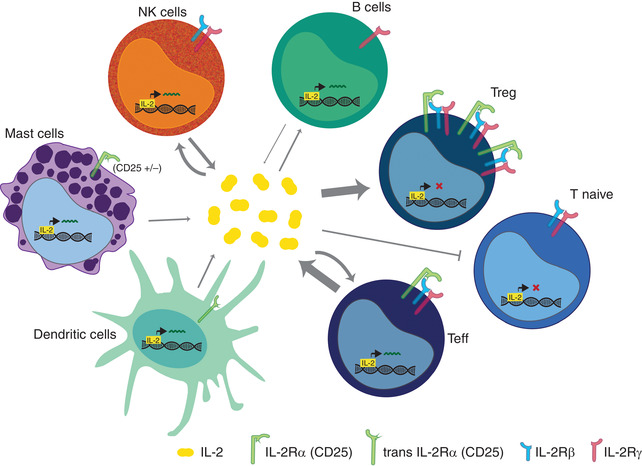FIGURE 1.

IL‐2 as a bridge between adaptive and innate immunity. Both adaptive and innate immune cell subsets have been identified as a source of IL‐2. Here, we summarized the main IL‐2 producers as well as the capacity of these cells to bind IL‐2 via 1 of the IL‐2 receptors: low affinity IL‐2Rα (CD25) dimeric intermediate affinity IL2‐R consisting of IL‐2Rβ (CD122) and the common γ ‐chain (CD132) and high affinity IL‐2R—heterotrimer of subunits α, β, and γ‐chain. Activated T cell represents main producer of IL‐2, although IL‐2‐driven regulation of B cell fate has been shown and to certain extent B cell are able to produce IL‐2 as well. Naïve T cells are not responsive to IL‐2 and they lack CD25. During early stage of immune response, after antigen activation, the expression of CD25 is induced leading to IL‐2 expression, T cell proliferation, and differentiation. Unlike other T cell subsets, Treg cells constitutively express high levels of CD25, with intermediate levels of CD122 and γ chain and are dependent on exogenous source of IL‐2. Within innate immune cells IL‐2 expression was proved in NK cells, activated DC and mast cells. IL‐2 is necessary for many NK cell functions. Although NK cells secrete IL‐2, they are likely dependent on T cell derived IL‐2, whereas intermediate affinity receptor helps to bind IL‐15. Some subsets of mast cells express IL‐2Rα although likely independently of its IL‐2‐related functions. 58 DC are able to trans present IL‐2 through CD25 and thus mediate T‐cell activation
